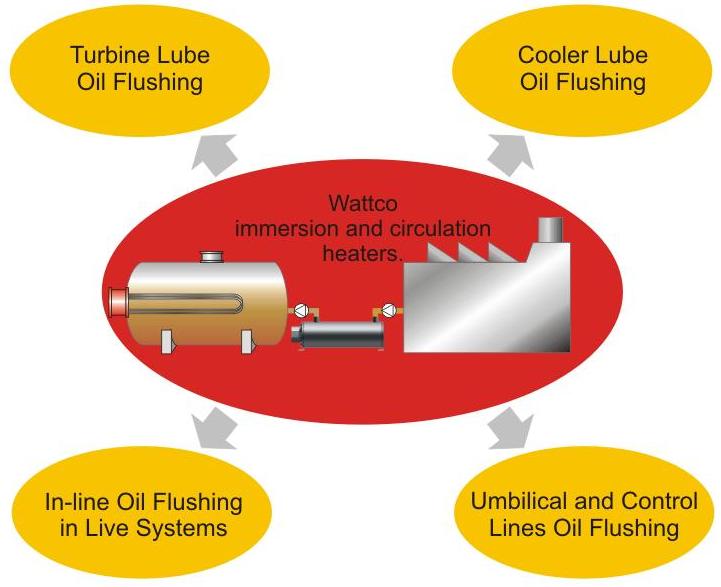Different Types of Oil Flushing in the Process Industry
The term “oil flushing” is used extensively in the process heating industry to refer to the cleaning of pipes and process equipment. Typical applications use immersion or circulation heaters that heat oil for circulating through the system to a desirable Reynolds number. Viscosity and temperature play critical roles in such conventional oil flushing. In many process applications, conventional oil flushing is not suitable to achieve the desired cleanliness. Additional actions are needed to increase the cleanliness level. In addition, a lucrative benefit exists when oil flushing is done for a live system. The customer does not need to shut down the process system. This saves valuable time and, thus, money. All these techniques, however, use immersion or circulation oil heaters for heating the oil (See Figure below.) to the desired temperature.

Pulse-induced wave oil flushing
Induced waves using PLC-controlled pulses
Oil flushing for live systems
Oil flushing for umbilical and control lines
Role of immersion and circular heaters
Selection of heaters for oil flushing
Get a quote on an immersion heater or circulation heater today! Find out more information about our other products such as control panels and infrared heaters by visiting WATTCO’s product pages.
